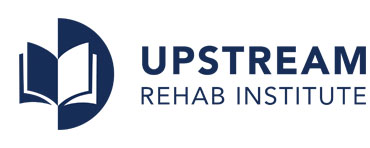Mark Powers, PT, DPT, OCS, COMT, FAAOMPT
Plantar fasciitis is a common physical therapy diagnosis in the outpatient physical therapy clinic. The prevalence in the general population is estimated to range from 3.6% to 7%, and the lifetime prevalence may be as high as 10%. Considering this prevalence, it’s important to remain knowledgeable regarding the best available evidence for this condition.1,2
Plantar fasciitis was originally described as an inflammatory condition affecting the plantar fascia tissue of the foot, however histological evidence does not support this as inflammation is rarely observed in chronic plantar fasciitis.3 More recently, plantar fasciitis has been compared to tendinopathies as the plantar fascia and tendons share similar loading and stress responses. Literature has shown that high-load strength training is effective for tendonopathies. In 2014, Rathleff et al. set out to determine if high-load strength training may be effective for plantar fasciitis given their similarities.4,5
In their study, one group received a specific plantar stretching protocol while the other group received high-load strength training. Both groups received a short patient information sheet and gel heel-inserts. The stretch group performed a common plantar fascia stretch for 10 repetitions, 10-second hold, 3 times per day.
The high-load strength training group performed unilateral heel-raises with a towel under the toes to achieve max extension at the top of the heel raise to activate the winlass mechanism. This group performed the exercises every second day for three months following a progression of decreasing reps and increasing load. The authors noted that it’s important to perform the heel raises slowly to avoid provoking symptoms.
Rathleff et al. used the Foot Function Index as their primary outcome and also did follow-ups at one, six, and twelve months. They found that at the three-month follow-up patients randomized to the high-load strength training group had a lower score by 29 points on the index which is well above the minimal relevant difference for that outcome measure. At six and twelve months, there was no major difference between groups.
Previous clinical practice guidelines have recommended mostly passive based treatments as grade “A” interventions.6 However, approaching plantar fasciitis from the perspective of a loading problem rather than an inflammatory condition, similar to the study mentioned above, may lead to a revision of the guidelines to include specific strengthening protocols over general “strengthening” exercises. Plantar fasciitis/osis/opathy remains a challenging condition to treat and further research is needed to determine the importance of various factors in this condition in order to guide intervention selection and improve current standards of care.
REFERENCES
- Hill CL, Gill TK, Menz HB, Taylor AW. Prevalence and correlates of foot pain in a population-based study: the North West Adelaide health study. J Foot Ankle Res 2008;1(1):2 doi: 10.1186/1757-1146-1-2[published Online First: Epub Date]|.
- Dunn JE, Link CL, Felson DT, Crincoli MG, Keysor JJ, McKinlay JB. Prevalence of foot and ankle conditions in a multiethnic community sample of older adults. Am J Epidemiol 2004;159(5):491-8
- Wearing SC, Smeathers JE, Urry SR, et al. The pathomechanics of plantar fasciitis. Sports Med 2006; 36(7):585-611
- Malliaras P, Barton CJ, Reeves ND, Langberg H. Achilles, and patellar tendinopathy loading programs: a systematic review comparing clinical outcomes and identifying potential mechanisms for effectiveness. Sports Med 2013;43(4):267-86
- Rathleff MS, Molgaard CM, Fredberg U, et al. High-load strength training improves outcome in patients with plantar fasciitis: A randomized controlled trial with 12-month follow up. Scand J Med Sci Sports 2014; 25(3):E292-e300
- Robroy LM, Davenport TE, Reischi SF, et al. Heel Pain-Plantar Fasciitis: Revision 2014. J Ortho Sports Phys Ther 2014; 44(11):A1-A33
Continuing Education Courses to consider: LQ: Comprehensive Management of the Lower Quarter
